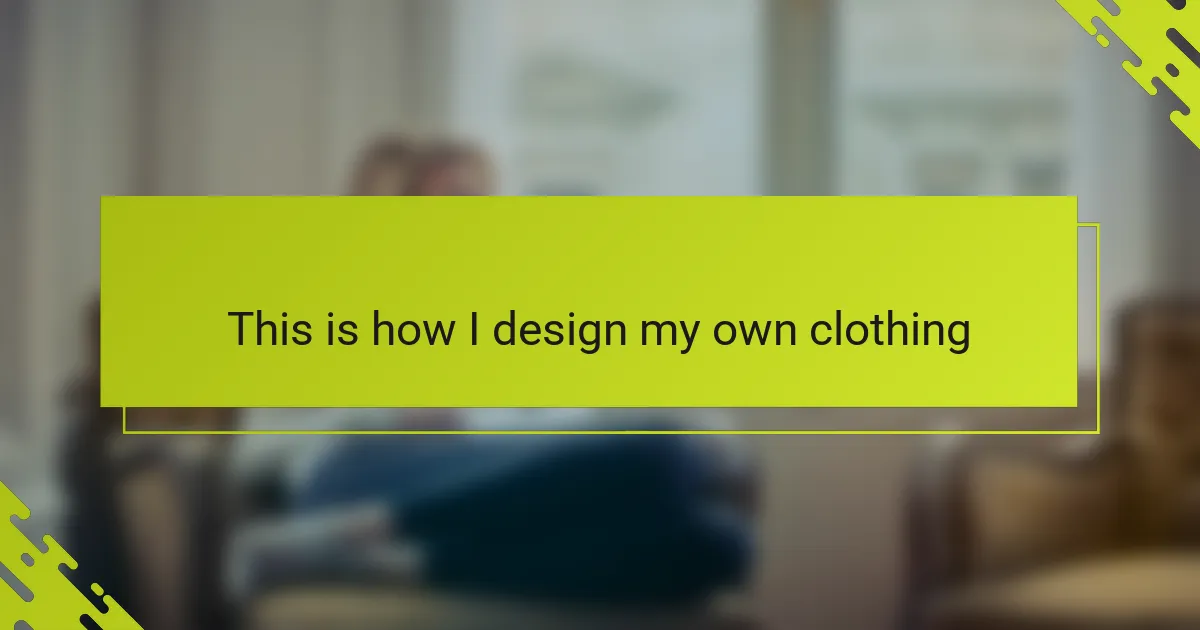Key takeaways
- Fashion for queer women serves as a powerful form of self-expression and a reflection of personal and community identities.
- Understanding fabric types and their characteristics is crucial for creating comfortable and functional clothing designs.
- Incorporating queer identity into designs fosters authenticity and can convey deeper meanings through symbolic elements.
- Personalizing garments enhances emotional connection, transforming clothing into intimate representations of one’s identity.
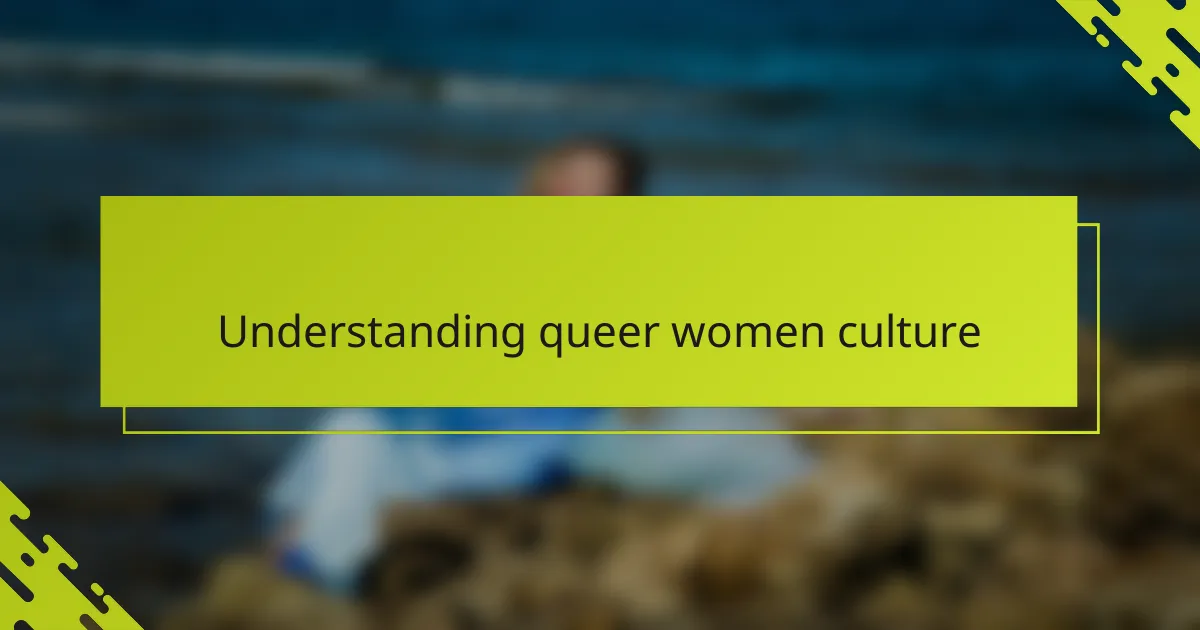
Understanding queer women culture
Understanding queer women culture means recognizing the rich diversity and resilience within a community that often defies mainstream norms. I’ve noticed that fashion, for many queer women, isn’t just about style—it’s a form of self-expression and quiet rebellion that carries deep personal meaning.
Have you ever paused to think about how clothing can tell a story without words? In queer women culture, garments can be imbued with history, identity, and emotion, reflecting both individual journeys and collective experiences. This awareness shapes how I approach designing my own clothes – always mindful of the layers of significance they hold.
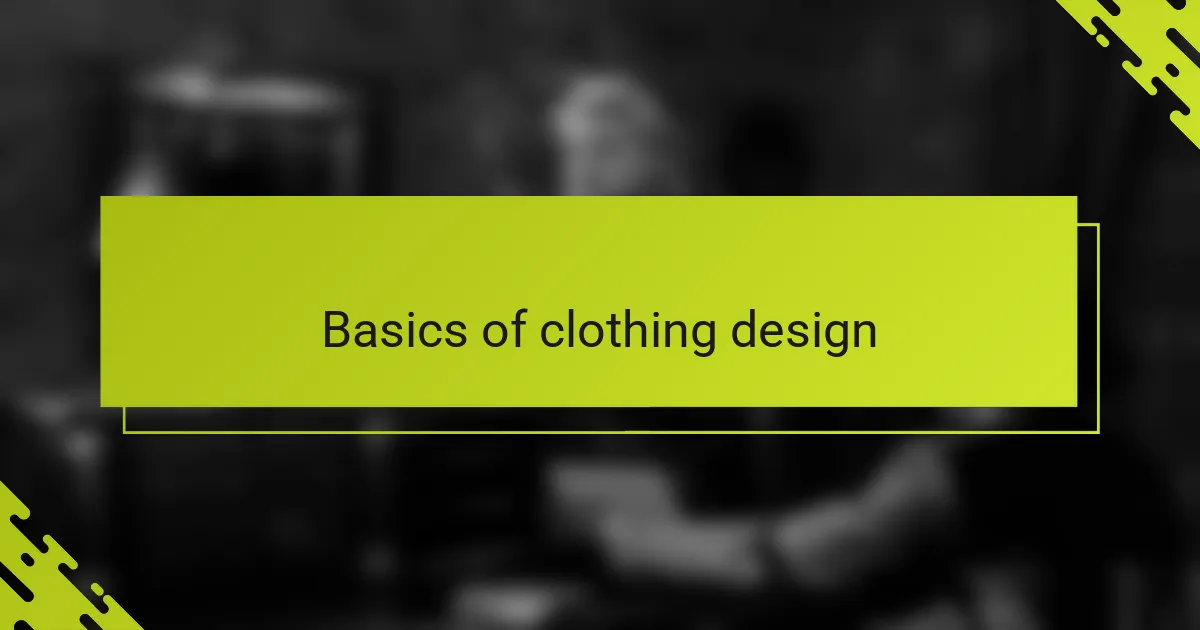
Basics of clothing design
When I first started designing clothes, I realized that getting the basics right made all the difference. Knowing about fabric types, how they drape, and how they react to movement helped me create pieces that felt good to wear, not just look good. Have you ever worn something that looks amazing but feels stiff or uncomfortable? That’s where understanding materials comes in.
Sketching designs might seem straightforward, but it’s an important step where ideas begin to take shape. I often doodle countless versions before settling on a style that feels true to me—sometimes rough lines even reveal emotions I didn’t expect. Do you find that drawing your ideas helps you understand what you really want to create?
Pattern making and measurements can feel technical, but they’re essential to making clothes that fit just right. Early on, I struggled to translate my sketches into wearable garments until I taught myself to draft simple patterns. That moment when a piece fits like it was made for you—that’s the magic of mastering this part.
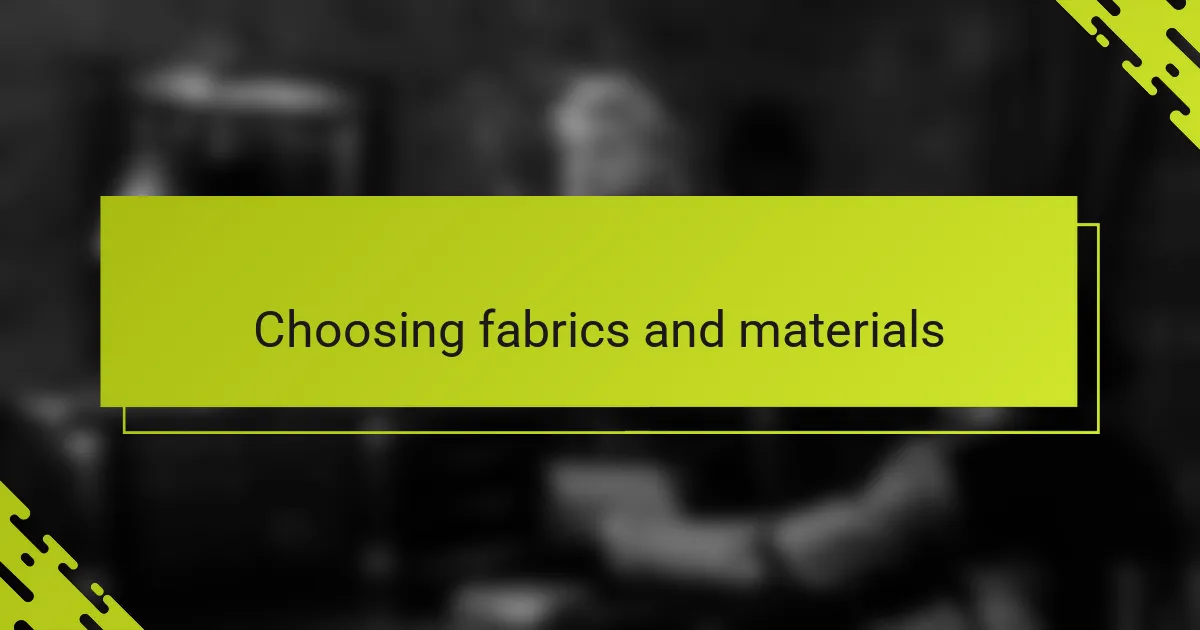
Choosing fabrics and materials
Choosing fabrics always feels like the first real step in bringing a design to life. I remember the first time I touched a bolt of soft organic cotton—it was like discovering a new way to hug myself. Have you noticed how certain textiles can instantly evoke comfort or confidence?
Texture and weight are huge for me. Sometimes I want a fabric that moves freely, like silk or rayon, to capture fluidity and grace. Other times, something sturdier like denim or canvas grounds the piece, adding strength and structure that reflect my mood or message.
And then there’s the story behind the material. I often seek out sustainably sourced or locally made fabrics because they carry values I want to wear and share. Isn’t it powerful to know your clothes are not just beautiful, but aligned with a purpose beyond fashion?
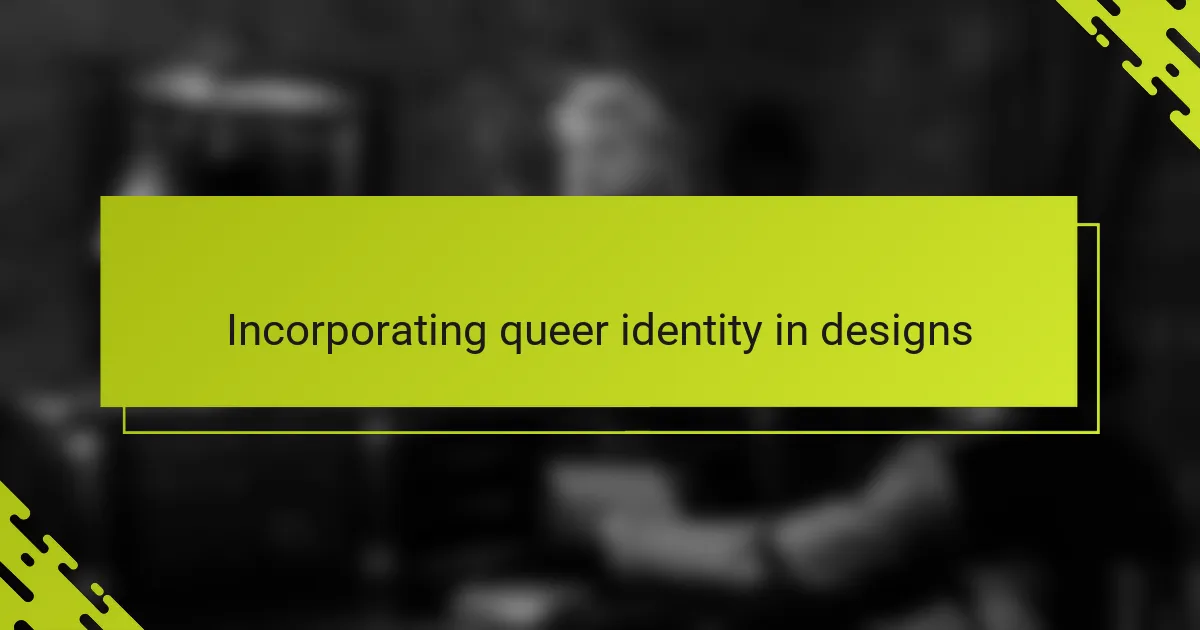
Incorporating queer identity in designs
Incorporating my queer identity into my designs is an act of honoring the parts of myself that the world doesn’t always see or understand. I often think about the subtle symbols and colors that resonate within our community—like using muted rainbow hues or blending traditionally masculine and feminine elements—to create something that feels authentic without shouting. Have you ever felt the power of wearing something that quietly declares who you are, even if no one else notices?
I remember designing a jacket where I mixed soft, flowing fabrics with sharp, structured lines to mirror my own experience of balancing vulnerability and strength as a queer woman. That piece became a wearable metaphor for me, reminding me daily that identity isn’t one-dimensional. Isn’t it amazing how clothing can hold deeper meanings when you infuse it with personal truth?
Sometimes, I experiment with unconventional cuts and asymmetry to challenge norms and celebrate fluidity—both in gender and expression. It’s a way of rejecting boxes and embracing freedom. When you create with your queer identity at the forefront, every stitch feels like an act of self-affirmation. Have you tried designing like that, where your identity isn’t just an inspiration but the very fabric of the creation?
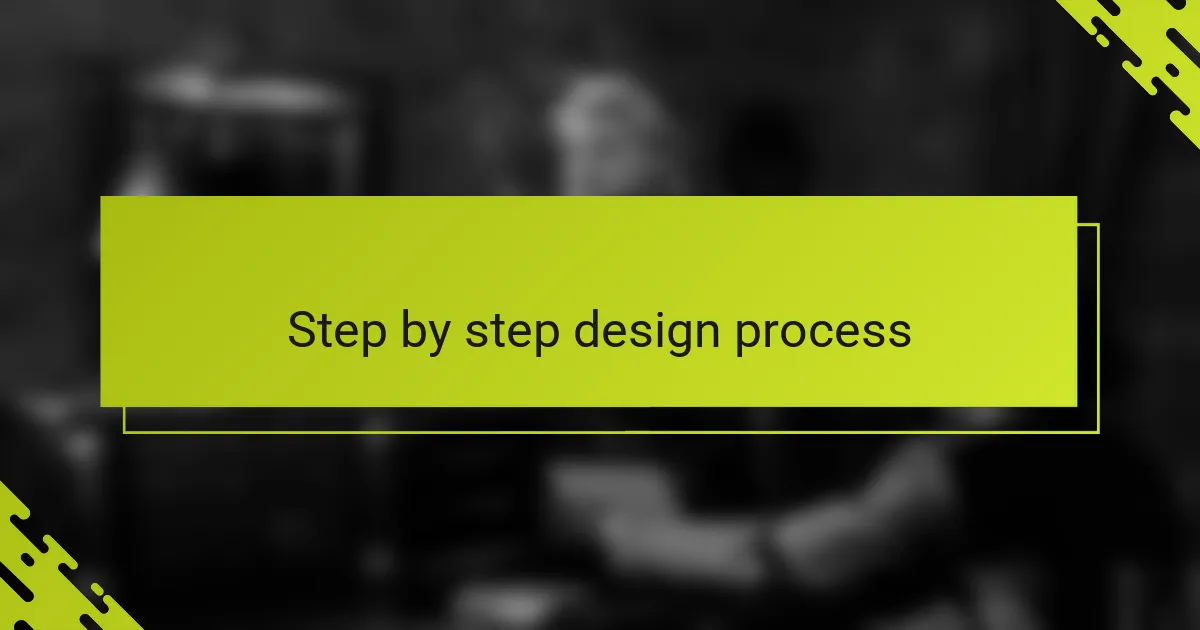
Step by step design process
The first step I always take is brainstorming—letting ideas flow without judgment. I’ll jot down feelings, symbols, or memories that stir something inside me, then start sketching rough outlines. Have you ever caught yourself doodling when your mind is full? That’s often where my most honest designs begin.
Next comes refining those sketches into clear, wearable concepts. This is where I balance creativity with practicality, deciding on shapes, cuts, and details that truly speak to the vision I want to bring alive. It’s like having a conversation between my imagination and reality—sometimes tricky, but always rewarding.
Finally, I dive into making patterns and sewing prototypes, which can feel like decoding a secret language at times. But when the fabric finally takes shape and fits just right, I’m reminded why each step matters. Do you know that moment when a design stops being just an idea and becomes something tangible you can wear and feel proud of? That’s pure magic for me.
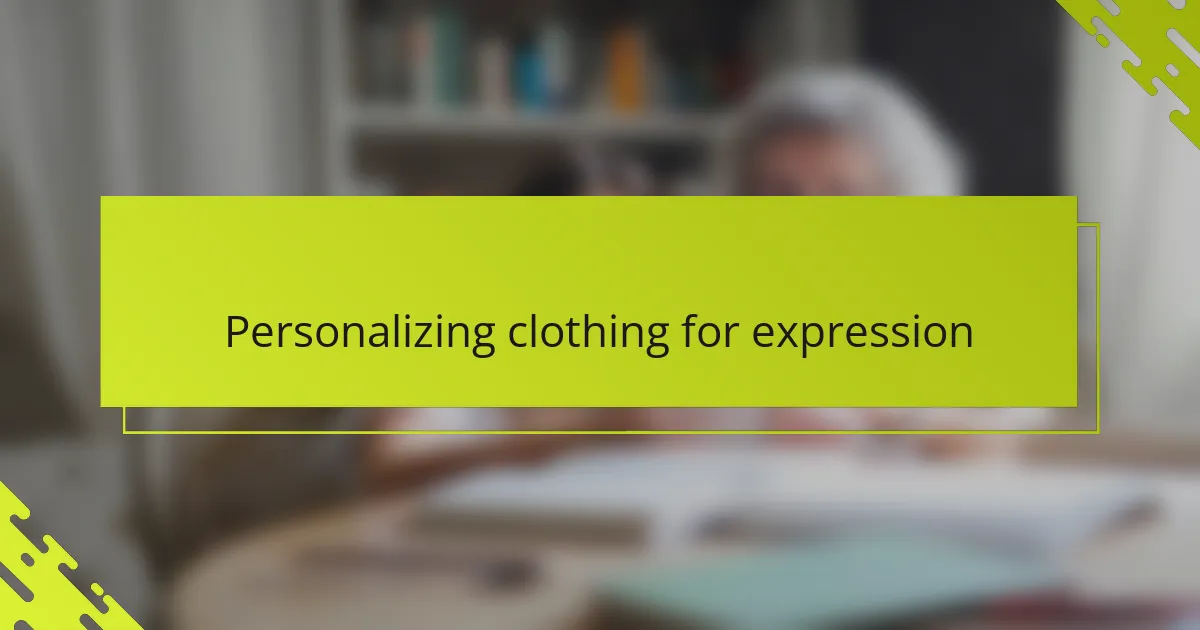
Personalizing clothing for expression
Personalizing clothing for expression feels like giving my inner world a physical form. When I add patches or stitch handwritten phrases inside hems, those small touches turn a garment into more than fabric—they become intimate declarations of who I am. Have you ever noticed how a simple alteration can make a piece suddenly feel like it was made just for you?
I’ve found that customizing colors or mixing unexpected textures allows me to channel my moods and stories visually. Sometimes I play with bold contrasts to shout joy; other times, soft fades speak to quieter reflections. Does crafting these details change how connected you feel to what you wear?
What resonates most is how personalizing clothes creates a dialogue between my self-expression and the outside world. Each choice—from embroidery to fabric manipulation—is like a small act of courage, revealing layers of identity that words might never capture. Have you experienced that sense of empowerment when your clothes speak your truth without saying a word?
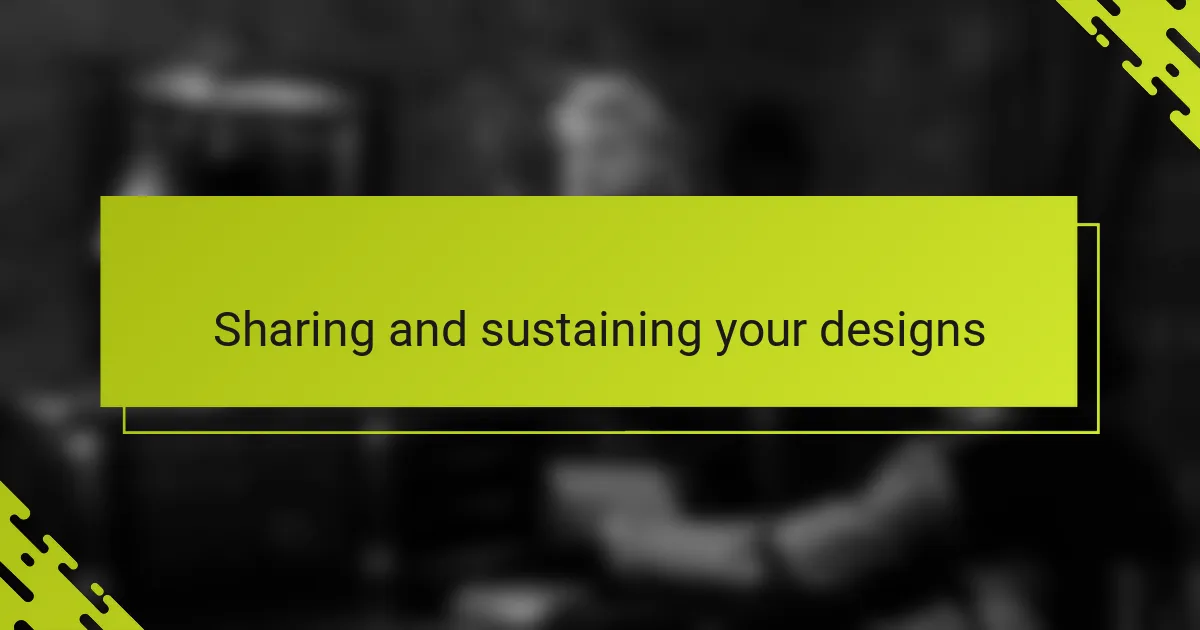
Sharing and sustaining your designs
Sharing your designs can feel vulnerable, but it’s also deeply rewarding. I remember nervously posting my first handmade piece online, unsure if anyone would see the meaning I poured into it. Have you ever hesitated to share something so personal, only to be met with unexpected support and connection?
Sustaining your designs means thinking beyond just making—they become part of a living story. For me, keeping a design alive involves teaching friends how to replicate it or swapping ideas within my community, creating a cycle of creativity that feels like breathing life into tradition. Isn’t it powerful when your work sparks someone else’s vision?
I also find sustainability tied closely to care—caring for each garment, repairing what’s worn, and honoring the effort behind every stitch. It’s like nurturing a relationship with your clothes that mirrors how we sustain the communities we cherish. How often do you return to a piece you made and see it grow alongside your own story?
